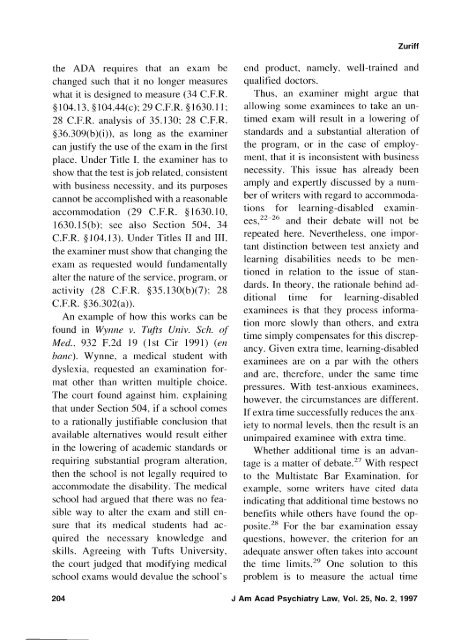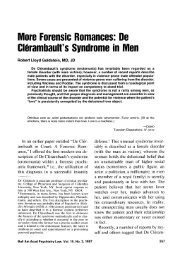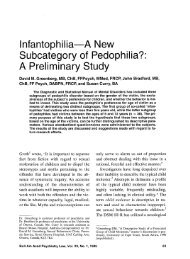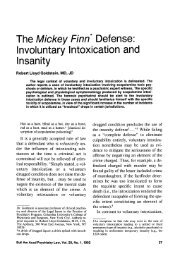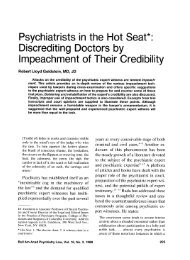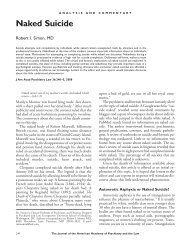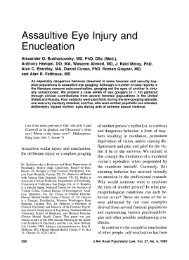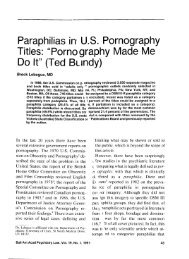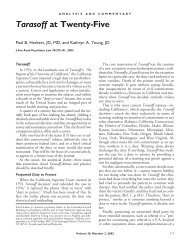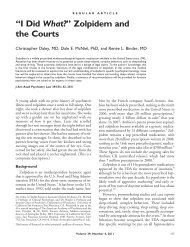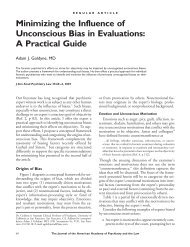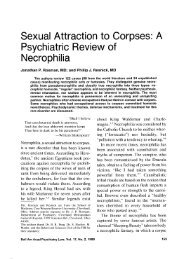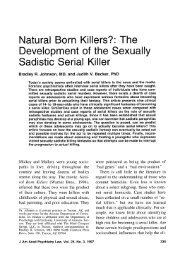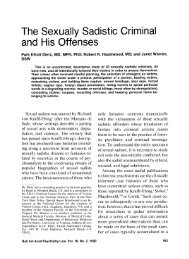Accommodations for Test Anxiety Under ADA?
Accommodations for Test Anxiety Under ADA?
Accommodations for Test Anxiety Under ADA?
You also want an ePaper? Increase the reach of your titles
YUMPU automatically turns print PDFs into web optimized ePapers that Google loves.
Zuriff<br />
the <strong>ADA</strong> requires that an exam be<br />
changed such that it no longer measures<br />
what it is designed to measure (34 C.F.R.<br />
3104.13, 5104.44(c); 29C.F.R. $1630.11;<br />
28 C.F.R. analysis of 35.130; 28 C.F.R.<br />
336.309(b)(i)), as long as the examiner<br />
can justify the use of the exam in the first<br />
place. <strong>Under</strong> Title I, the examiner has to<br />
show that the test is job related, consistent<br />
with business necessity. and its purposes<br />
cannot be accomplished with a reasonable<br />
accommodation (29 C.F.R. 3 1630.10,<br />
1630.15(b); see also Section 504, 34<br />
C.F.R. Q: 104.13). <strong>Under</strong> Titles I1 and 111,<br />
the examiner must show that changing the<br />
exam as requested would fundamentally<br />
alter the nature of the service, program, or<br />
activity (28 C.F.R. §35.130(b)(7); 28<br />
C.F.R. §36.302(a)).<br />
An example of how this works can be<br />
found in Wyizize I?. Tufts Utziv. Sch. of<br />
Med., 932 F.2d 19 (1st Cis 1991) (en<br />
barzc). Wynne, a medical student with<br />
dyslexia, requested an examination <strong>for</strong>mat<br />
other than written multiple choice.<br />
The court found against him, explaining<br />
that under Section 504, if a school comes<br />
to a rationally justifiable conclusion that<br />
available alternatives would result either<br />
in the lowering of academic standards or<br />
requiring substantial program alteration,<br />
then the school is not legally required to<br />
acconlmodate the disability. The medical<br />
school had argued that there was no feasible<br />
way to alter the exam and still ensure<br />
that its medical students had acquired<br />
the necessary knowledge and<br />
skills. Agreeing with Tufts University,<br />
the court judged that modifying medical<br />
school exams would devalue the school's<br />
end product, namely. well-trained and<br />
qualified doctors.<br />
Thus, an examiner might argue that<br />
allowing some examinees to take an untimed<br />
exam will result in a lowering of<br />
standards and a substantial alteration of<br />
the program, or in the case of employment.<br />
that it is inconsistent with business<br />
necessity. This issue has already been<br />
amply and expertly discussed by a number<br />
of writers with regard to accommodations<br />
<strong>for</strong> learning-disabled examinee~,'~~"<br />
and their debate will not be<br />
repeated here. Nevertheless. one important<br />
distinction between test anxiety and<br />
learning disabilities needs to be mentioned<br />
in relation to the issue of standards.<br />
In theory, the rationale behind additional<br />
time <strong>for</strong> learning-disabled<br />
examinees is that they process in<strong>for</strong>mation<br />
more slowly than others, and extra<br />
time simply compensates <strong>for</strong> this discrepancy.<br />
Given extra time, learning-disabled<br />
examinees are on a par with the others<br />
and are, there<strong>for</strong>e, under the same time<br />
pressures. With test-anxious examinees.<br />
however, the circumstances are different.<br />
If extra time successfully reduces the anxiety<br />
to normal levels. then the result is an<br />
unimpaired examinee with extra time.<br />
Whether additional time is an advantage<br />
is a matter of debate.'7 With respect<br />
to the Multistate Bar Examination, <strong>for</strong><br />
example, some writers have cited data<br />
indicating that additional time bestows no<br />
benefits while others have found the opposite.28<br />
For the bar examination essay<br />
questions, however, the criterion <strong>for</strong> an<br />
adequate answer often takes into account<br />
the time limits.'" One solution to this<br />
problem is to measure the actual time<br />
204 J Am Acad Psychiatry Law, Vol. 25, No. 2, 1997


